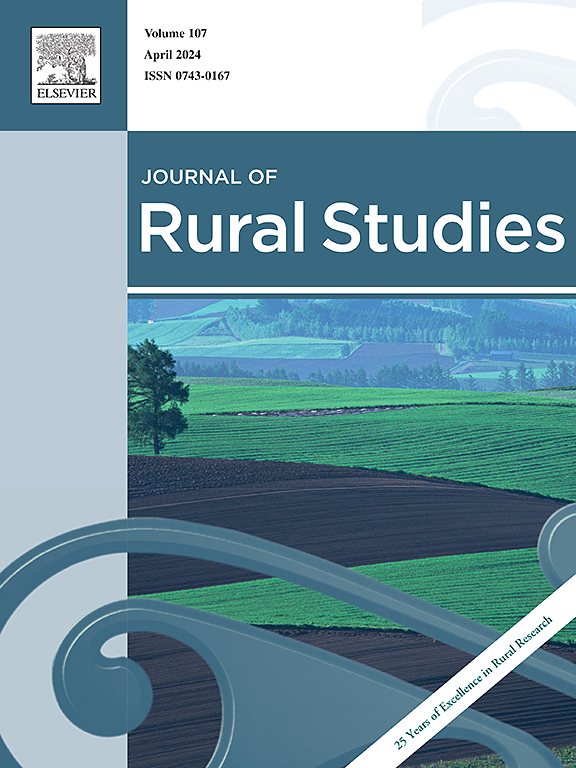Factors influencing farmer participation in bottom-up collaborative agri-environment-climate measures
IF 5.7
1区 社会学
Q1 GEOGRAPHY
引用次数: 0
Abstract
Agri-environment-climate measures (AECMs) that focus on spatial coordination at the landscape level and the joint working of different actors represent a novel policy approach in Europe. As participation in AECMs generally depends on farmers' motivations and preferences, AECM design needs to consider their perspectives. In this respect, bottom-up collaborative AECMs become increasingly important, as they are driven by actor engagement and interaction. To investigate the factors influencing farmer participation in such approaches and assess their perceived importance, we conducted qualitative in-depth interviews with 36 farmers in northern Germany. At the time of the interviews, the farmers had recently decided whether to participate in a novel bottom-up collaborative AECM initiative. The interviews were analysed using qualitative content analysis. We found that farmers' attitudes towards nature and administrative aspects were most relevant. Economics, farmers' curiosity, and social influences also played important roles. While many of these factors were shaped by past experiences, we identified characteristics specific to collaborative AECMs that influence farmers' decision-making. For example, spatial coordination, farmer-to-farmer communication, expert help or expected conflicts with others were found to have either a positive or negative impact. To increase participation, policymakers and collaborative AECM initiatives should utilise the positively perceived characteristics as levers. For instance, this could involve combining ecologically effective measures with non-monetary benefits, such as support structures and public outreach, as well as providing opportunities for farmers to exchange ideas and share success stories. However, such approaches should also take into account farmers’ level of experience with cooperation.
影响农民参与自下而上农业环境气候协同措施的因素
农业-环境-气候措施(aecm)侧重于景观层面的空间协调和不同参与者的联合工作,代表了欧洲一种新的政策方法。由于农民对农业生态管理的参与通常取决于农民的动机和偏好,农业生态管理设计需要考虑农民的观点。在这方面,自下而上的协作aecm变得越来越重要,因为它们是由参与者参与和互动驱动的。为了调查影响农民参与这些方法的因素并评估其感知重要性,我们对德国北部的36名农民进行了定性深入访谈。在接受采访时,农民们最近决定是否参加一个新颖的自下而上的AECM合作倡议。访谈采用定性内容分析进行分析。我们发现,农民对自然的态度与行政管理方面的关系最为密切。经济、农民的好奇心和社会影响也发挥了重要作用。虽然这些因素中的许多都是由过去的经验形成的,但我们确定了影响农民决策的协作aecm特有的特征。例如,空间协调、农民与农民之间的沟通、专家帮助或与他人的预期冲突被发现会产生积极或消极的影响。为了提高参与度,政策制定者和AECM合作倡议应利用积极感知的特征作为杠杆。例如,这可能涉及将生态有效措施与非金钱利益相结合,例如支持结构和公众宣传,以及为农民提供交流思想和分享成功故事的机会。然而,这些方法也应该考虑到农民的合作经验水平。
本文章由计算机程序翻译,如有差异,请以英文原文为准。
求助全文
约1分钟内获得全文
求助全文
来源期刊

Journal of Rural Studies
Multiple-
CiteScore
9.80
自引率
9.80%
发文量
286
期刊介绍:
The Journal of Rural Studies publishes research articles relating to such rural issues as society, demography, housing, employment, transport, services, land-use, recreation, agriculture and conservation. The focus is on those areas encompassing extensive land-use, with small-scale and diffuse settlement patterns and communities linked into the surrounding landscape and milieux. Particular emphasis will be given to aspects of planning policy and management. The journal is international and interdisciplinary in scope and content.
 求助内容:
求助内容: 应助结果提醒方式:
应助结果提醒方式:


